Saw Palmetto, Serenoa repens
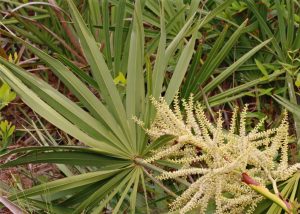
Photo by Mary Keim
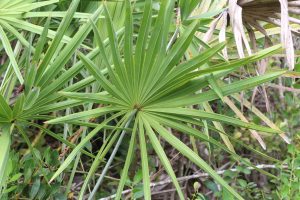
Photo by Mary Keim
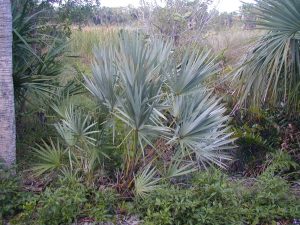
Photo by Jenny Evans
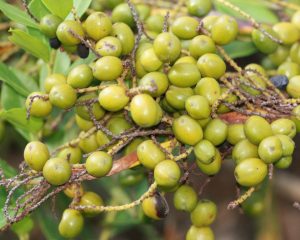
Photo by Mary Keim
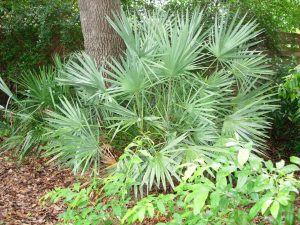
Photo by Harriett Wright
LANDSCAPE USE
A major component in the restoration of native pine flatwoods. Used in mass plantings, along foundations, or to conceal the open space under decks and raised patios. Also used for erosion control as well as in road and powerline rights of-way, highway medians, and to soften and beautify parking lots.
FORM
A reclining to upright, thicket-forming palm, often with a creeping, prostrate trunk but some times trained into a slender tree.
NATIVE RANGE
A variety of habitats including well- to poorly drained flatwoods, sand pine-oak scrub, coastal dunes, cabbage palm hammocks, and scrub oak ridges. North Carolina, south throughout Florida, and west to Louisiana.
Characteristics
Flowers: Tiny, white, borne in conspicuous dusters on elongated, branched innflorescences. Spring and summer.
Leaves: Fan shaped, medium to dark green, 3–4 feet long and wide, borne at the apex of a long leaf stalk that is armed along its margins with saw-like teeth.
Fruit: A conspicuous, elliptical, 1-inch-long drupe, orange when fresh, turning blue-black to black at maturity. Summer and fall.
Bark: Trunks covered with brownish, fibrous scales
CULTURE
Soil; Well- to poorly drained, acid to neutral soils. Adaptable to several soil profiles. The coastal form, called silver saw palmetto, is very salt tolerant.
Exposure: full sun to part shade.
Water: Supplemental irrigation ordinarily not required. Hardiness Zones: 8 to 11
Life Span: Saw palmetto is very long-lived. Those in well-established natural communities have been estimated to be several hundred years old.
BEST FEATURES
Long life. Thicket-forming habit. Tolerance of difficult situations such as parking lots and highway medians. Fruit is relished by a variety of wildlife, including deer, hears, and turkeys. Requires low maintenance once established and no irrigation.
COMPANION PLANTS
Slash and longleaf pines (Pinus elliottii and P. palustris), turkey, sand live, and bluejack oaks (Quercus laevis, Q. geminata. And Q. incana), summer haw (Crataegus flava), Chickasaw plum (Prunus angustifolia), gopher apple (Licania michauxii), Adam’s needle (Yucca filamentosa), wiregrass (Aristida stricta var. beyrichiana), lowbush and highbush blueberries (Vaccinium spp.), tarflower (Bejaria racemosa), wild rosemary (Conradina canescens).
DISADVANTAGES
May require annual removal of old leaves to maintain a neat appearance.
CULTIVARS
Silver saw palmetto (S. repens ‘Silver’) occurs naturally along the Florida east coast, is very salt and drought tolerant, and is highly prized for the ornamental value of its attractive foliage.
SIMILAR AND RELATED SPECIES
Blue-stem palmetto (Sabal minor) and needle palm (Rhapidophyllum hystrix) are similar but lack the saw-toothed stem of saw palmetto.